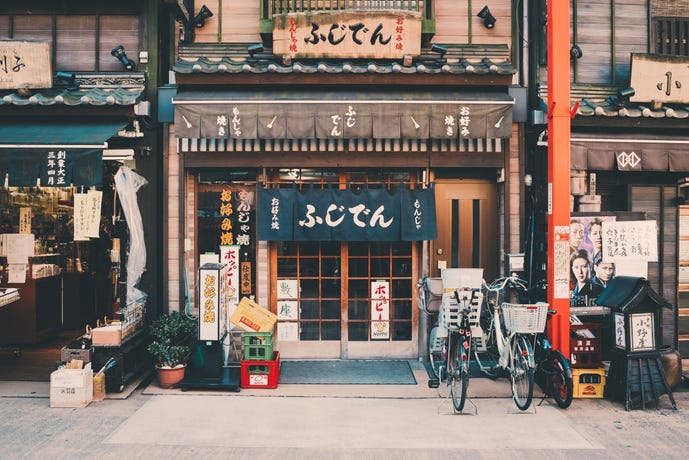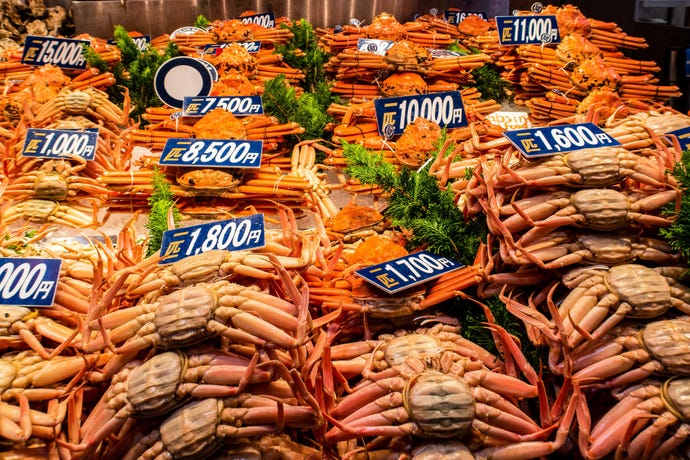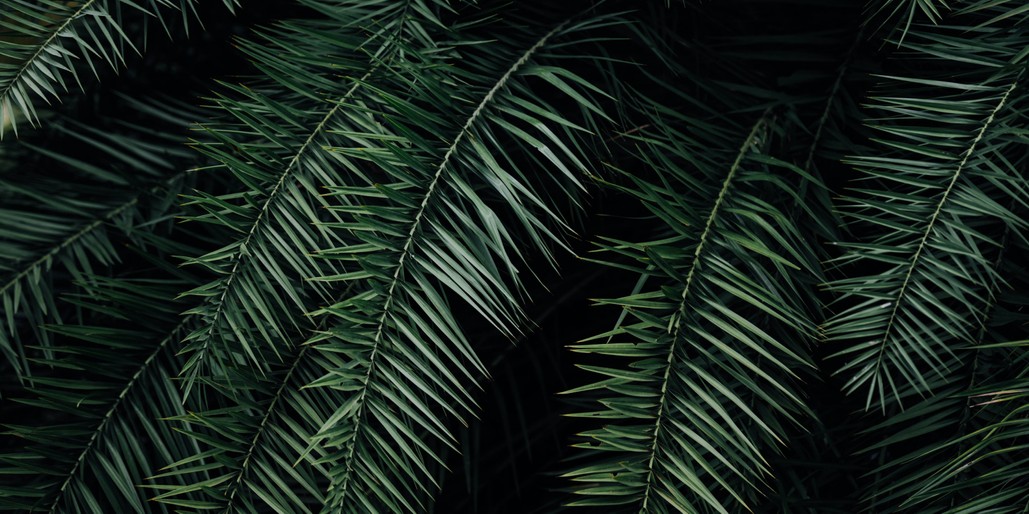A Japanese Adventure
Japan is a destination like no other, where a vision of the future intermingles with traditions of the past. It's not uncommon to interact with a robot in a hotel lobby, before crossing the street and entering a 1,000 year old temple. Whilst Tokyo & Kyoto will be the bedrock of any itinerary, we also recommend spending a couple of nights at a hot spring resort, where you can relax and experience the Japanese countryside.
Japan is a destination like no other, where a vision of the future intermingles with traditions of the past. It's not uncommon to interact with a robot in a hotel lobby, before crossing the street and entering a 1,000 year old temple. Whilst Tokyo & Kyoto will be the bedrock of any itinerary, we also recommend spending time exploring other smaller cities, as well as the Japanese countryside.

July 6th - 9th | Tokyo
July 9th - 12th | Kawaguchiko
July 12th - July 15th | Kyoto
Tokyo Partner Office - For urgent matters please contact:
A Partner: +81 90-8512-8194
If there's no immediate answer you can call:
Another Partner: +81 90-7728-6339
- +81 3-5464-8669 (office number)
We respectfully ask that you don't reach out to your in-country contacts until you are in Japan. For any communication pre-trip, please reach out to Rick.
Visitors to Japan now have the option to complete a Visit Japan Web before their arrival. By providing all of the requested information before arrival, it should expedite procedures through immigration & customs when you land in Tokyo.
Note that this is not compulsory, and the relevant forms will be available when you land, but it will likely allow for a smoother arrival.
We have put together this Destination Guide for you, full of unique insights and ways to get excited before you travel, such as:
- Spotify playlists
- Dishes to try
- Helpful phrases
- Packing guide
- Tipping guides
Plus more!
Recently, Japanese trains have become more strict when it comes to luggage allowance.
On most lines, the total baggage dimension should not exceed 160 cm (63 inches). More details can be found here
If you have larger pieces of luggage, we recommend sending them to your next scenset via the takkyubin service. Your guides and the respective hotel staff will be able to easily facilitate this for you.
Note that you need to send it the day prior, in order for it to arrive on time.
The fee will be provided.
We'll be happy to chat with you about this in further detail.
You are scheduled to arrive in Denver in the morning, giving you a couple of hours to connect before your flight to Tokyo.
Please reconfirm your flight schedule, and be sure to communicate any changes to your itinerary.

You are scheduled to arrive into Narita airport in the afternoon.
Independently proceed through immigration & customs, before collecting your luggage. An English-speaking assistant will greet you at the arrivals hall and escort you to your private transfer.
Note: Look out for a sign displaying your name.
Proceed by private transfer to your hotel. From Narita, this should take about 70-80 minutes, depending on traffic.
One of the world’s most cutting-edge capitals, Tokyo is a city of contrasts. Famous for its sprawling neon-lit landscape it is also home to expansive parkland, peaceful shrines and temples, and lovingly tended gardens. On the surface, Tokyo is a mix of digital trends and conspicuous consumption, but dig deeper and you will find a city rooted deeply in the traditional culture. Shinto shrines and Buddhist temples stand close to skyscrapers as a reminder of a more contemplative time.

Check into your hotel and settle into your accommodations for an evening at leisure.
Kimpton Shinjuku offers extra benefits for guests who say the phrase "Good for the Sol" at check in.
The Kimpton Shinjuku
Two Essential Rooms
- Daily Breakfast Included



Meet your guide in the lobby of your hotel in the morning.
Touring today will be done by public transportation and taxis.
Meiji Shrine was built nearly 100 years ago to commemorate Emperor Meiji’s contribution to modern Japan. The shrine is entirely surrounded by a forest, with an area of 70 hectares of land and over 120,000 trees, all of which were donated to the shrine from different parts of Japan.
Although rather young compared with other shrines, Meiji shrine has its own dramatic story to tell. While the original construction of the shrine was completed in 1926, the shrine was destroyed during the bombings of World War II and rebuilt in 1958.
If you’re lucky, you’ll spot a couple on their wedding day, making their way through the shrine’s grounds on their way to their ceremony.

Harajuku’s Takeshita Street - This narrow, crowded street is lined with shops that sell the latest fashion trends, sweets, and other interesting items. It is in this area that some of the outrageous fashion that Japan is known for originates.
As the trendy streets of Harajuku end, the amazing architecture of Omotesando begins. With seemingly endless modern, cutting-edge architecture, great shopping, and delicious restaurants, Omotesando is Tokyo’s Champs-Elysées Boulevard. Many of the buildings along this street were designed by Pritzker Prize winning architects such as Kazuyo Sejima and Ryue Nishizawa.

Catch the best views of Tokyo at this 360° open-air observation deck at the rooftop of Shibuya Scramble Square. Shibuya Sky is approximately 230 metres above ground and is the highest point in the district of Shibuya.
The ‘Sky Edge’, a corner where you can look down at the cityscape below without any obstructions and is a particularly good photo spot that provides a panoramic view of the city.
In addition to the breathtaking views, the rooftop also features hammocks for cloud watching and an observation compass to help you identify major landmarks in the distance such as Tokyo Tower, Tokyo Stadium and even Mt Fuji (on a clear day). At night, you'll be able to see a light show called the 'Crossing Light' as 18 beams illuminate the city sky.

In Shibuya one can witness (and experience) the world's busiest intersection, as well as one of Japan's most endearing symbols of loyalty - the statue of a faithful dog.
The Shibuya scramble is located in the heart of Shibuya's shopping district. Due to its proximity with many popular stores, Shibuya Station, and the location of countless delicious eating spots, the intersection regularly sees thousands of people cross each time the traffic lights turn red and the pedestrian lights turn green.
Also located in Shibuya is the bronze statue of the dog. The dog was well known for his loyalty in waiting for his owner for nearly 10 years, arriving at the station daily in anticipation of his owner's return from work.
Soon after, a statue was erected in his honor. Unfortunately the statue was melted down during World War II, but the current replica was commissioned shortly after.

Your tour will conclude today in the late afternoon.

Meet your guide in the lobby of your hotel in the morning.
Touring today will be done by public transportation and taxis.
For the discerning traveler seeking an immersive and exclusive cultural experience, a visit to a Japanese fish market is a must. Witness the spectacle of the auction process and observe the skilled fishmongers at work. The outer market of Tsukiji is a great place to not only see seafood but also kitchen utensils and other Japanese ingredients.

Enjoy a private sushi class at a local restaurant. A master chef will show you how to slice sashimi and make nigiri. With detailed instruction, you will make your own nigiri for lunch, using fresh ingredients from the market.

Head to the recently relocated TeamLab Borderless Digital Art Museum, at Azabudai Hills. Using 520 computers and 470 projectors, this has been one of the most popular museums in Tokyo for years. TeamLab is a group of various specialists including artists, programmers, CG animators and mathematicians. Enjoy a multi-sensory experience at this new location in Central Tokyo.

Located in the heart of Tokyo, the vibrant Asakusa district is a captivating blend of old and new, where ancient traditions and modern attractions seamlessly coexist. Stepping into Asakusa feels like a journey back in time, with its narrow streets, traditional architecture, and historic landmarks. The district is most renowned for Senso-ji, one of Tokyo's oldest and most significant Buddhist temples, attracting visitors from all over the world who come to admire its magnificent red gate (Kaminarimon) and explore the bustling Nakamise shopping street, filled with stalls selling traditional snacks, souvenirs, and crafts.
Beyond its cultural treasures, Asakusa offers a vibrant atmosphere with its lively marketplaces, traditional restaurants serving mouth-watering local delicacies, and the chance to experience traditional Japanese festivals and events throughout the year. Whether it's immersing in rich history, shopping for unique souvenirs, or savoring the flavors of Japan, Asakusa offers a captivating experience that showcases the essence of Tokyo's rich heritage.
Sensōji Temple is the oldest temple in Tokyo, having been built in 645AD.
Unfortunately, after remaining relatively unscathed for 13 centuries, it was destroyed during WWII. Sensoji was rebuilt after the war and has become a symbol of rebirth of the city and the nation.
Nowadays, millions of people step through the Kaminarimon or Thunder Gate, famous for its huge lantern, and stroll along Nakamisedori, the street leading to the temple, filled with small shops selling all manners of goods.

Your tour will conclude around the late afternoon.

Spend a final morning in Tokyo at leisure, before transferring to Kawaguchiko this afternoon.
Meet your driver in the lobby of your hotel in the afternoon.
Note: We shall reconfirm the pick up time before departure.
You will be transferred to the Kawaguchiko area by private vehicle. It takes about 2.5 hours to get to this area depending on traffic.

Fufu Kawaguchiko
One Premium Suite
- Daily Breakfast & Dinner Included
Note: Although a night will be spent in a mountain hut on July 10th, this hotel will be booked for three nights as an alternative for those who may not wish to continue the climb.

Relax this evening, and prepare for your climb tomorrow.
Before departing Japan, the climbing team will schedule a Zoom session to answer any questions.

Note that you will need to bring some gear with you for the climb, and a detailed list can be found here.
Start your ascent as follows:
- Morning: Meet your English-speaking mountain guide in the hotel lobby
- Late Morning: Check Equipment at a trekking gear rental store
- Late Morning: Visit Mt.Fuji Shrine
- Early Afternoon: Arrive at 5th station and Lunch
- Early Afternoon: Departure
- Late Afternoon: Arrive at 8th station
- Late Afternoon: Supper time
- Evening: Go to bed in Mountain Hut


The tentative schedule for today is as follows:
- Early morning: Begin climbing
- Morning: Sunrise
- Late morning: Arrive at the summit
- Morning/early afternoon: Descend from the summit
- Afternoon: Arrive at 5th station
- Afternoon: Get back to your hotel in Lake Kawaguchi and relax

Depart your hotel at about morning, and proceed by private transfer to Mishima Station (about 75 minutes).
Kyoto is the nation’s former capital and was the residence of the emperor from 794 until 1868. With 2,000 religious buildings, including 1,600 Buddhist temples and 400 Shinto shrines, as well as palaces, gardens, and associated architecture, it is one of the best-preserved cities in Japan and has 17 UNESCO World Heritage sites. Kyoto represents the “Japan of old” and beyond the high-rise skyscrapers built as a monument to progress, the real monument to Japan’s historical and cultural past can be found in the city’s narrow alleyways where tea houses abound and kimono-clad geisha hurry around.

As you disembark the train you will meet your English speaking assistant on the platform. They will know from which car you will be exiting.
Note: When trains arrive there can be a crowd of people. If you don't immediately see your driver please wait a few minutes for the crowds to disperse, before calling.
Proceed by private transfer to your hotel for the afternoon at leisure.

Hyatt Regency
One King & One Twin Room
- Daily Breakfast Included


Meet your guide, an English-speaking cycling guide, in the lobby of your hotel in the morning.
A taxi will be taken to the cycling office.
This morning you'll enjoy a guided cycle tour of some of Kyoto's highlights. Head first to Sanjusangen-do temple, the longest wooden building in the world at a length of 118m. A Tendai Buddhist temple, Sanjusangen-do was built in 1164 to house 1001 statues of Kannon, the Buddhist goddess of mercy. Though the golden statues are said to have one thousand arms apiece, most visitors quickly notice that they have only forty. The Buddhist formula is that each arm can save an impressive 25 worlds.
Then, head south to Kyoto's most famous shrine, Fushimi Inari. Thousands of orange torii gates lead up the mountainside. Take in the magnificent shrine and explore some of the surrounding areas.
Upon conclusion of your cycling experience your guide will meet you at the cycling office.
Touring this afternoon will be done by private vehicle.
Kinkakuji, or the Golden Pavilion, is one of Japan’s iconic sites. The temple grounds first began as a small villa in 1224 and was converted to a Zen temple shortly after. Like so many other historical landmarks in Japan, the temple has unfortunately suffered destruction from fires in its history. The building, as it stands today, is a historically accurate reconstruction of the temple before it burned down from arson in 1950.

Visit a karesansui – also known as a rock garden.
Perhaps one of Japan’s most famous rock gardens is the one found at Ryoan-ji. While other rock gardens have clearly defined meanings, those who view Ryoan-ji are left to figure out what the layout of the rocks means.
What meaning will you find in this carefully laid out garden?

Your tour will conclude in the late afternoon at your hotel.

Meet your guide in the lobby of your hotel in the morning.
Touring today will be done by private vehicle.
The bamboo forest offers paths for walking or biking. It is a must-see for those visiting Arashiyama. The bamboo grown here has been used for centuries for creating crafts, such as tea whisks, sake cups, baskets, and many others. Experience a roughly 30-minute rickshaw ride through the bamboo grove.

With a history dating back nearly 700 years, Tenryuji is one of Arashiyama's most visited sites, and for good reason. While the building complex has suffered from fire damage throughout history (like much of Japan), the stunning gardens remain in their scenset form. As you stroll through the garden, both from within the temple and on the garden paths, you'll move from the pond, which symbolizes a large lake, up the mountain and into the forest (where multiple cherry trees can be found). As you exit the temple, you'll come to the famous bamboo forest.

While many religious sites have a somber tone, Otagi Nenbutsu-ji is a fun twist on the Japanese temple experience. Here you'll find well over 1,000 small stone statues, called rakan, often depicting humorous and lighthearted disciples of the Buddha.

Experience a private tea ceremony at a local temple. A tea master will show you how to serve tea, using special utensils. Sweets will be served with your tea.

Your tour will conclude in the late afternoon at your hotel.
You will have a final few hours at leisure before your journey home. You may wish to stroll through the quaint neighborhood of Gion.

Meet your driver in the lobby of your hotel at midday.
Note: We shall reconfirm the pick up time before departure.
Proceed by private transfer to KIX Osaka Airport (approximately 90 minutes depending on traffic).
Independently connect in San Francisco. You have around two and a half hours between flights.

Thank you for traveling with us.
We hope that we were able to help you build lasting memories of your time in the Land of the Rising Sun.

Scenset invests in making the world a better place. Scenset will offset the fuel used during the trip. On top of that, we will offset an extra 10% to make your trip a carbon-positive experience.
Currently, we support Gold Standard Climate+ Projects from the Gold Standard Foundation.
Travel Insurance
- We recommend purchasing comprehensive travel insurance to protect your trip from any unforeseen circumstances. An insurance provider offers great, whole-trip travel insurance for both international and domestic trips with 24/7 support – including weekends and holidays. Get a quote now.
This link may result in us earning a commission or fee at no additional cost to you.
Balance Due: will be provided
Please refer to our terms & conditions here.